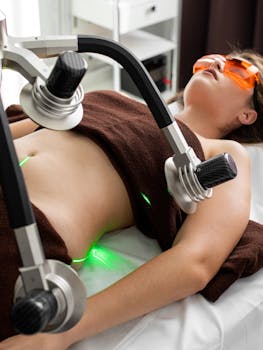Surgery often brings questions about pain, and a common one patients search for is why does liposuction hurt so bad when recovery begins. Understanding the sources of discomfort, realistic timelines for soreness, and reliable strategies to manage pain can help you prepare mentally and physically for the procedure and the weeks after.
Why liposuction can hurt so much
Liposuction involves removing fat from under the skin using cannulas (thin tubes) and suction. That mechanical disruption damages fat cells, small blood vessels, lymph channels, and nerve endings — all of which cause inflammation and pain as the body heals. Early post-operative pain is typically a combination of localized tissue trauma, nerve irritation, and the normal swelling and bruising that follow any surgical trauma.
What causes the pain?
- Tissue trauma: The cannula creates multiple tunnels through fatty tissue, which leads to inflammation and soreness.
- Nerve irritation: Small sensory nerves are stretched or temporarily injured during suction, producing burning, aching, or numb sensations.
- Swelling and fluid shifts: Accumulated fluid and bruising increase pressure in the treated area and can intensify discomfort.
- Muscle and connective tissue reaction: If a larger area is treated, nearby muscles and fascia may feel tender from manipulation.
Does lipo hurt during and after the procedure?
During modern liposuction, anesthesia minimizes intraoperative pain. Many patients receive local tumescent anesthesia, general anesthesia, or a combination, so the procedure itself is usually pain-free. The question “does lipo hurt” typically refers to the recovery period: yes, many people experience moderate discomfort in the first few days, with gradual improvement over two to six weeks depending on the extent of treatment and individual healing.
How long does the pain last?
Immediate post-op pain is most intense in the first 48–72 hours, then shifts from sharp to aching as inflammation subsides. Most patients report significant improvement by two weeks, though residual soreness, tightness, and numbness can persist for several months while nerves regenerate and tissues settle into their new contour. Following aftercare instructions helps reduce duration and severity.
Pain management commonly includes prescribed analgesics, anti-inflammatory medications, compression garments to reduce swelling, and early ambulation to encourage circulation. Your surgeon may recommend physical therapies such as lymphatic drainage massage once wounds have healed to help reduce swelling and discomfort.
To learn more about the procedure itself, risks, and general facts, reputable resources such as the surgical overview on Wikipedia provide useful background: Liposuction — Wikipedia.
Pros, cons, and realistic results
Liposuction can create noticeable contour improvements and is effective for targeted fat removal when diet and exercise aren’t enough. Pros include rapid body shaping, long-lasting results for removed fat cells, and improvements in self-image for many patients. Cons include the potential for uneven contours, scarring, numbness, seroma (fluid pockets), infection, and the discomfort discussed above. Notably, liposuction is not a weight-loss method; it’s a body-contouring procedure and results depend on skin elasticity and overall health.
Choosing an experienced, board-certified surgeon reduces complication risk and improves aesthetic outcomes. Pre-operative planning, realistic expectations, and strict adherence to post-op care are crucial for smooth recovery and optimal results.
For guidance on caring for skin during recovery and optimizing overall skin health, you may find helpful tips at descriptive anchor text, which covers modern skincare approaches that can complement surgical recovery.
Practical tips to reduce pain and speed recovery
- Follow your surgeon’s medication plan: take prescribed painkillers and anti-inflammatories as directed for the first few days.
- Wear compression garments: they limit swelling, improve contouring, and often reduce pain by providing support.
- Stay mobile: gentle walking promotes circulation and reduces risk of blood clots, which also aids healing.
- Ice and elevation: where appropriate, cool compresses and elevating the treated area for short periods can ease swelling and discomfort.
- Schedule follow-ups: early detection of complications such as seromas or infection shortens the duration and severity of symptoms.
- Takeaways:
- Pain from liposuction stems from tissue trauma, nerve irritation, and inflammation.
- Most discomfort peaks in the first 48–72 hours and improves over weeks with proper care.
- Effective pain control, compression, and gentle movement speed recovery and improve outcomes.
FAQ
Does liposuction hurt more than other types of surgery?
Pain levels vary by procedure and individual tolerance. Liposuction often produces moderate pain due to the nature of tissue disruption, but because it can be performed under local tumescent anesthesia, many patients manage well with short-term oral pain medication compared with procedures that involve deeper tissue cutting.
How can I tell if post-op pain is normal or a complication?
Normal pain gradually improves and responds to prescribed treatments. Severe, increasing pain accompanied by fever, unusual drainage, rapidly expanding swelling, or redness should prompt immediate contact with your surgeon, as these signs may indicate infection or other complications.






